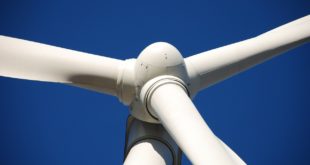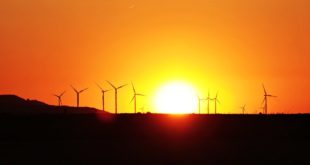Although it is much less expensive to initially get hooked into the local electric company’s grid than it is to set up and hook into wind turbines, in the long run one saves money by utilizing the wind for one’s energy needs—while also becoming more independent. Not receiving an electric bill while enjoying the advantages of the modern electrically-driven lifestyle is a wondrous feeling.
Electric bills and fuel bills are rising steadily—but the cost of wind turbine energy is zero, and the cost of installing and hooking up a turbine is steadily coming down as demand rises and more commercial success is realized by various companies producing the turbines and researching technologies to make them ever more efficient. In addition, people are moving away from the traditional electric grids and the fossil fuels for personal reasons including desire for greater independence, the desire to live remotely or rurally without having to “go primitive”, political concerns such as fears of terrorist strikes on oil fields or power grids, or concerns about the environment. Again, this motivation to get away from the traditional energy sources is the same one that causes people to seek the power of the wind for their energy, giving more business opportunities to profit from wind turbine production and maintenance, which drives their costs down for the consumers. In nearly thirty states at the time of this writing, homeowners who remain on the grid but who still choose to use wind energy (or other alternative forms) are eligible for rebates or tax breaks from the state governments that end up paying for as much as 50% of their total “green” energy systems’ costs. In addition, there are 35 states at the time of this writing where these homeowners are allowed to sell their excess energy back to the power company under what are called “net metering laws”. The rates that they are being paid by the local power companies for this energy are standard retail rates—in other words, the homeowners are actually profiting from their own energy production.
Some federal lawmakers are pushing to get the federal government to mandate these tax breaks and other wind power incentives in all 50 states. Japan and Germany already have national incentive programs in place. However, “A lot of this is handled regionally by state law. There wouldn’t really be a role for the federal government,” the Energy Department’s Craig Stevens says. And as might be imagined, there are power companies who feel that it’s unfair that they should have to pay retail rates to private individuals. “We should [only have to] pay you the wholesale rate for … your electricity,” according to Bruce Bowen, Pacific Gas & Electric’s director of regulatory policy. However, the companies seem to be more worried about losing short term profits than about the benefits, especially in the long run, of the increased use of wind turbines or wind farms. Head of the Center for Energy Efficiency and Renewable Technologies of California V. John White points out, “It’s quality power that strengthens the grid.”
 Alternative Energy HQ solar power for homes, wind energy, and bio fuel issues
Alternative Energy HQ solar power for homes, wind energy, and bio fuel issues






